Is this a bad idea? Yes. |main blog @killjoy-cryptid
Last active 60 minutes ago
Don't wanna be here? Send us removal request.
Text
Round 3 - Chondrichthyes - Orectolobiformes



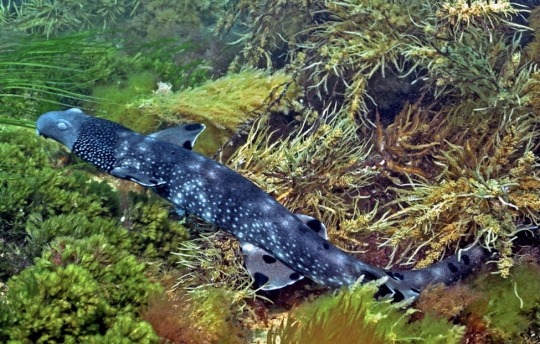
(Sources - 1, 2, 3, 4)
Orectolobiformes are an order of sharks sometimes known as “Carpet Sharks.” They include the families Brachaelurus (“blind sharks”), Ginglymostomatidae (“nurse sharks”), Hemiscylliidae (“bamboo sharks”), Orectolobidae (“wobbegongs”), Parascylliidae (“collared carpet sharks”), Rhincodontidae (“Whale Shark”), and Stegostomatidae (“Zebra Shark”).
Orectolobiformes have five gill slits, two spineless dorsal fins, and a small mouth that does not extend past the eyes. Many species have barbels: tactile whiskerlike sensory appendages near their mouths. Grooves known as nasoral grooves connect the nostrils to the mouth. A spiracle occurs beneath each eye which is used in respiration. Orectolobiformes are commonly called “carpet sharks” due to their flattened appearance and often ornate patterning, with many species spending most of their time resting on the ocean floor. However, this order also contains the Whale Shark (Rhincodon typus) (image 2), the largest chondrichthyan, whose record holder had a length of 18.8 m (61.7 ft). The smallest of the order, at up to about 30 cm (12 in) long, is the Barbelthroat Carpet Shark, (Cirrhoscyllium expolitum). Orectolobiformes are a diverse order of sharks with differing sizes, appearances, diets, and habits. Most are nocturnal. Most carpet sharks feed on the seabed in shallow to medium-depth waters, detecting and picking up molluscs, crustaceans, and other small creatures. Wobbegongs (image 1) are ambush predators, camouflaging on the seafloor and swallowing prey that swims too close. Whale Sharks are filter feeders.
Reproduction methods among carpet sharks also vary. Some species lay eggs directly into the water column or enclose them in horny egg cases. Some will push their egg cases into crevices for protection. Other species are ovoviviparous and give live birth. Pups are born relatively advanced and independent.
Orectolobiformes first appeared in the Early Jurassic. The oldest known orectolobiform genera are Folipistrix and Annea.
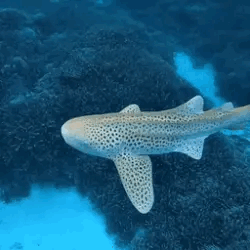
Propaganda under the cut:
Nurse Sharks are nocturnal and largely solitary at night, but they spend the day resting in groups, often piled on top of each other for safety.
The largest confirmed individual Whale Shark (Rhincodon typus) had a length of 18.8 m (61.7 ft), though 14 m (46 ft) is a more likely upper limit. Their lifespans are estimated to be between 80 and 130 years. Along with the Basking Shark and Megamouth Shark, they are the only other filter-feeding shark.
Blind Sharks have fully functioning eyes, but were named so because they would close them when caught by anglers
The Zebra Shark (Stegostoma tigrinum) was named for the black and white stripes of juveniles. As adults, their zebra stripes fade and are exchanged for cheetah print. Early taxonomists thought that juvenile zebra sharks were a different species due to how different their patterning looked!
In Madagascar, Whale Sharks are called Marokintana in Malagasy, meaning "many stars", after the appearance of the markings on the shark's back.
The Epaulette Shark:
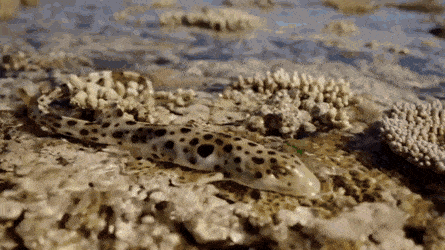
As an adaptation to living in tidal pools and shallow coral reefs, the Epaulette Shark (Hemiscyllium ocellatum) moves by seemingly walking, bending its body from side-to-side in a salamander-like gait, pushing off of the substrate with its paddle-shaped pectoral and pelvic fins. The shark is capable of swimming, but often prefers to walk along the sandy or coral bottom even when the water is deep enough to allow it to swim freely. This mode of locomotion even enables the shark to crawl out of the water to access isolated tidal pools as it hunts for worms, crustaceans, and small bony fish, and it can cope with oxygen depletion in these conditions for over three hours.
138 notes
·
View notes
Text
Round 3 - Chondrichthyes - Lamniformes
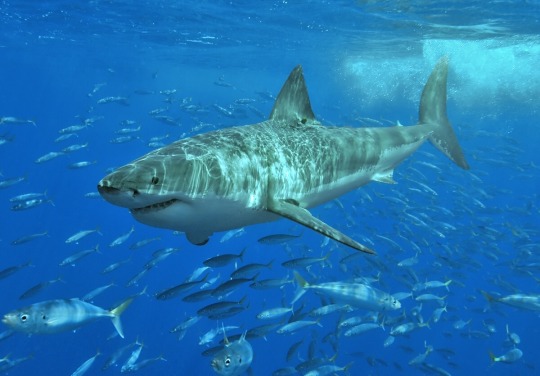



(Sources - 1, 2, 3, 4)
The Lamniformes are an order of sharks commonly known as “Mackerel Sharks.” They include the families Alopiidae (“thresher sharks”), Cetorhinidae (Basking Shark), Lamnidae (“white sharks”), Megachasmidae (Megamouth Shark), Mitsukurinidae (Goblin Shark), Odontaspididae (“sand tiger sharks”), and Pseudocarchariidae (Crocodile Shark).
Lamniformes are distinguished by possessing two dorsal fins, an anal fin, five gill slits, eyes without nictitating membranes, and a mouth extending behind the eyes. Lamnidae and Alopiidae are also distinguished for maintaining a higher body temperature than the surrounding waters: ie they are “warm-blooded”. Members of this order fill a diverse array of niches, from the apex predator Great White Shark (image 1), to the giant filter-feeder Basking Shark (image 2), to the deep sea ambush predator Goblin Shark (image 4).
Lamniformes are ovoviviparous, which means eggs develop and hatch in the uterus and continue to develop until the mother gives live birth to several young. Litters are usually small, consisting of 1-18 pups, depending on species. The unborn sharks participate in oophagy, in which they feed on ova: nutritious eggs produced by the mother specifically to feed the embryonic sharks before they are born. However, Odontaspididae will instead produce just two embryos, with the stronger embryo eating the other. After they are born, growth can be slow. For example, Sand Tiger Shark males reach sexual maturity at an age of 5 - 7 years and females reach maturity at about 7 - 10 years of age. Male Thresher Sharks reach sexual maturity between 7 and 13 years of age and females between 8 and 14 years. Male Great White Sharks take 26 years to reach sexual maturity, while the females take 33 years!
The Lamniformes arose in the Early Cretaceous. They reached their highest diversity during the Late Cretaceous, but severely declined during the K-Pg extinction. This is a somewhat diverse order, though many of its families only contain one remaining living species as the last of their kinds. Today, only 15 species of Lamniform remain.

Propaganda under the cut:
Great White Sharks (Carcharodon carcharias) are one of the longest lived Chondrichthyans, living up to 70 years or more! They are also one of the largest predatory sharks, with the largest preserved female specimen measuring 5.83 m (19.1 ft) long, though average females measure 4.6 to 4.9 m (15 to 16 ft) long and males 3.4 to 4.0 m (11 to 13 ft).
The Basking Shark (Cetorhinus maximus) and the Megamouth Shark (Megachasma pelagios) are two of the three living plankton-eating sharks. The Basking Shark is also the second largest shark species. They are slow-moving, gentle giants which migrate thousands of kilometers to seek the richest patches of zooplankton. Meanwhile, the Megamouth is much less active, instead slowly migrating vertically, spending the day deep beneath the sea and the night closer to the surface, tracking the movement of plankton in the water column.
The Shortfin Mako Shark (Isurus oxyrinchus) is the fastest known shark species, able to reach speeds of 74 km/h (46 mph) in bursts.
Salmon Sharks (Lamna ditropis) look like chibi-fied Great Whites. They often hunt in packs, sometimes of up to 30 to 40 individuals, to take down schools of fish such as, you guessed it, salmon.
“Globsters” are organic masses of flesh which have rotted in such a way to be unrecognizable, at least to the untrained eye. When they die, Basking Sharks tend to decompose in a way that they lose most of their lower jaw, dorsal, and caudal fins first, making them often resemble the extinct plesiosaurs! This was the case of the Zuiyo-maru Carcass, a photo of a very plesiosaur-looking globster which was passed around on the early internet as evidence that the prehistoric creatures were still living in the ocean.
The Porbeagle (Lamna nasus) has been observed engaging in play behavior: pushing floating objects around, repeatedly wrapping and unwrapping themselves in kelp, chasing each other, and reacting with curiosity to novel objects such as anglers’ balloon floats.
The deep-sea Goblin Shark (Mitsukurina owstoni) is often depicted with its highly protrusible jaws hanging out, but these jaws are usually not protruding. When the shark is pulled up from the water, dead, the muscles that typically hold the jaws in place relax and allow the shark’s jaws to protract. For years, the only images we had of this shark were dead specimens with protruding jaws. With modern technology like ROVs, we can now observe these sharks alive in their own environment, with their jaws locked firmly in place (image 4). As slow-moving ambush predators, Goblin Sharks snatch up prey by rapidly extending their jaws without needing to move their bodies much. Their long snouts are covered with ampullae of Lorenzini that enable them to sense minute electric fields produced by nearby prey.
Crocodile Sharks (Pseudocarcharias kamoharai) were responsible for damaging deep sea fiberoptic cables when the technology was first deployed in 1985. They tried to help and now look at us. We have anxiety.
The extinct, Late Cretaceous Aquilolamna milarcae, commonly called the “Eagle Shark” has been tentatively assigned to the Lamniformes. This unique shark’s winglike pectoral fins were so long that the shark was overall wider than it was long, akin to a manta ray.
Undoubtedly the most famous extinct Lamniform is Otodus megalodon, which lived from the Early Miocene to the Early Pliocene and was one of the largest predatory sharks to have ever lived.
Thresher Sharks are popular big-game sport fish, and are hunted commercially for their meat, livers (for shark liver oil), skin (for shagreen) and fins (for use in delicacies such as shark-fin soup). All three species are listed as vulnerable on the IUCN endangered species list. Basking Sharks have long been a commercially important fish as a source of food, shark fin, animal feed, and shark liver oil. They are endangered. Mako fishing is a prominent sport fishing activity around the world. As one of the fastest species in the ocean, they offer acrobatic flips, fast runs, and strong fights, which all greatly entertain anglers. They are an endangered species. Sand Tiger Sharks are a highly prized food item in the western northern Pacific, Ghana, India, Pakistan, and Japan, and they are fished for their hide, fins, and liver oil (used in cosmetic products such as lipstick) off North America. They are also a popular sport fish in South Africa and some other countries. They are critically endangered. How are people getting away with killing and selling parts of endangered species? Because these endangered species are “just fish”, and unfortunately, controls on fishing are not exactly sufficient. The best way to stop this overexploitation is to stop the high demand for it.
92 notes
·
View notes
Text
Round 3 - Chondrichthyes - Carcharhiniformes




(Sources - 1, 2, 3, 4)
Carcharhiniformes, commonly known as “Ground Sharks”, are the largest order of sharks. They include the families Scyliorhinidae (“catsharks”), Atelomycteridae (“coloured catsharks”), Pentanchidae (“deepwater catsharks”), Dichichthyidae (“bristle sharks”), Pseudotriakidae (“false catsharks”), Proscylliidae (“finback catsharks”), Leptochariidae (“Barbeled Houndshark”), Triakidae (“houndsharks”), Hemigaleidae (“weasel sharks”), Carcharhinidae (“requiem sharks”), Galeocerdonidae (“Tiger Shark”), and Sphyrnidae (“hammerhead sharks”).
Due to being such a large order, Carcharhiniformes are very diverse. Scyliorhinid catsharks (image 4) are distinguished by their elongated, cat-like eyes and two small dorsal fins set far back. They are usually small, with a patterned appearance, ranging from stripes to patches to spots. Carcharhinids are migratory, live-bearing sharks of warm seas (sometimes of brackish or fresh water) and include some of the most familiar species, such as the Bull Shark, Lemon Shark, Blacktip Shark (image 2), and Whitetip Reef Shark. The large-bodied, striped Tiger Sharks (image 3) are the only living members of their family Galeocerdonidae. The most distinctive family in this order is possibly the Sphyrnids, the Hammerhead Sharks, which range from the omnivorous Bonnethead Shark to the bizarre Winghead Shark to the giant Great Hammerhead (gif below).
The Carcharhiniformes arose in the Middle Jurassic, and were morphologically similar to living catsharks. They did not attain their modern diversity of forms until the Late Cretaceous, and didn’t reach medium and large body sizes until the Cenozoic.

Propaganda under the cut:
The Bonnethead Shark (Sphyrna tiburo), a small species of hammerhead, is the only shark known to be omnivorous. While it feeds on crustaceans, molluscs, and small fish, it also ingests large amounts of seagrass, which has been found to make up around 62% of gut content mass.
The "Swell Sharks" of the genus Cephaloscyllium have the curious ability to fill their stomachs with water or air when threatened, increasing their girth by a factor of one to three.
Some catsharks, such as the Chain Catshark (Scyliorhinus retifer), are biofluorescent.
The Slender Smooth-hound (Gollum attenuatus), is the only ground shark species known to exhibit intrauterine oophagy, in which developing fetuses are nourished by eggs produced by their mother. They will form egg capsules which contain 30-80 ova, within which only one ovum develops; the remaining ova are ingested and their yolks stored in its external yolk sac. The embryo then proceeds to develop normally, without ingesting further eggs.
The oddly shaped head of hammerhead sharks is called a cephalofoil, and is used for hunting. Numerous electroreceptory organs are located on the underside of the cephalofoil. The hammerhead will swing their head in broad angles over the sea floor to pick up the electrical signatures of stingrays buried in the sand. The cephalofoil also serves as a hydrofoil that allows the shark to quickly turn around and strike at a ray once detected. It may also pin it down with its head while pivoting to take a large bite from each side of the ray's pectoral fin disc.
The Tiger Shark (Galeocerdo cuvier) is one of the biggest predatory sharks, with exceptionally large females reaching over 5 m (16 ft 5 in). Males are much smaller, with only the largest getting up to 4 m (13 ft 1 in). They are apex predators and scavengers, with a reputation for eating almost anything. They are eaten by orcas and humans, also apex predators with a reputation for eating almost anything.
Tiger Sharks possess unique significance as ‘aumākua, revered as family guardians in Hawaiian culture. The tiger shark, regarded as an intelligent and highly perceptive spiritual entity, assumes the role of a messenger bridging the gap between humans and the divine.
During a 2015 expedition, an international team found two species of Carcharhiniform shark, along with microbial communities, living within the underwater crater of the active volcano Rejo te Kvachi, now informally dubbed “Sharkcano”. Using a baited drop camera, an international team observed Scalloped Hammerhead Sharks (Sphyrna lewini) and Silky Sharks (Carcharhinus falciformis) living in the hot, acidic water.
Many of the sharks in this order are endangered due to overfishing, both as bycatch and purposefully for shark fin soup. Critically endangered species include the Pondicherry Shark, Daggernose Shark, Great Hammerhead, Scalloped Hammerhead, Scalloped Bonnethead, Ganges Shark, Striped Smooth-hound, Oceanic Whitetip Shark, Borneo Shark, Whitefin Swellshark, and Whitefin Topeshark. The Lost Shark may already be extinct.
109 notes
·
View notes
Note
🍉 🍉
Hello from the heart of suffering, I hope you are doing well I hope you can help me spread my suffering with repeated displacement we are froced to live with I'm tired, talking to you and I can barely write, but I really need your help! Please talk about us, reblog my pinned blog, and donate if you can🙏🏻 Thanks 🌹
• Our campaign is vetted by 🇵🇸 @/gazavetters List at #291
• DONATE HERE / OUR PIN POST HERE
.
2 notes
·
View notes
Note
Hello, I hope my message finds you well Can you help me amplify my desperate plea to survive? I wish everyone who can support my family with $5, $10 or any amount they can donate or at least reblog My pinned blog 🙏🏻
My family needs you and depends on you to survive 🍉🍉
My pinned blog link
Thanks a lot 🌹🌹
^
3 notes
·
View notes
Note
🚨💔Hello, I am sorry for the inconvenience, but I must do this. Please, can you help me with any small amount? There is no house, no food, and no other necessities of life. Your donation may save a child from dying of hunger. You cannot imagine the difficulties of the life we live in Gaza. 🚨💔 Is it possible for you to share my link on your sites so that people’s voice can reach people? Thank you very much ❤️🇵🇸 and I am sorry again On that 🙏🚑🚨
https://gofund.me/eb1d4499
👈🚨🚑🙏🇵🇸
#Vetted by 90-ghost
#a-shade-of-blue
freegaza#freepalestine#help#gofundlt#savepalestine
^
2 notes
·
View notes
Note
Hello 😇👋,
My family and I are facing incredibly difficult times due to the ongoing war in Gaza 💔. Our dreams and future have been shattered, leaving us feeling lost and without purpose. My brother Anas and I have launched a GoFundMe campaign to help us escape Gaza, continue our education, and support our family.
Making a small donation or sharing the campaign — would mean the world to us.
Link: https://gofund.me/9c46877a
Thank you so much for your kindness and support 💖
With gratitude,
Ahmed Basil
Vetted by @90-ghost & @gazavetters
.
1 note
·
View note
Text
excellent news! The grant did not pass!!
Please take a moment to read this. A Canadian company wants to build a sulfide copper mine near Lake Superior, which holds 21% of the world’s freshwater. The mine would produce 98.5% toxic waste, stored in a dam just two miles from the lake. The dam can only withstand a 1-in-100-year storm, but the area has had two 1-in-1,000-year storms in the past decade. If it breaks, toxic water could flood the lake. Copper sulfide mines in the U.S. have consistently contaminated nearby water sources, and this mine could hurt local communities with lower employment, income, and property values. The company wants $50 million in taxpayer funding to move forward. The Michigan Senate is about to vote, if they don’t get the funding they can’t build it.
Sign this petition if you want to prevent this disaster by searching “Protect the Porkies, Protect Lake Superior— Stop the Copperwood Mine!” at change.org.
24K notes
·
View notes
Text
Found! Thank you guys!
Does anyone have that post or even a screenshot with like a bunch of online sellers that sell nature related things I know umvvelt is on there if that helps
I am doing marine biology gifts for family and can’t find that post
Thanks!
20 notes
·
View notes
Text
Does anyone have that post or even a screenshot with like a bunch of online sellers that sell nature related things I know umvvelt is on there if that helps
I am doing marine biology gifts for family and can’t find that post
Thanks!
20 notes
·
View notes
Text
🚨 We Need Your Kindness to Survive 🚨
Hello, My name is Mosab Elderawi, and I live in Gaza with my family. Life here has become harder than I ever imagined, and I’m writing this with hope in my heart that you might hear our story.
The ongoing war has devastated my family. We’ve lost 25 family members—each one a beloved part of our lives, taken too soon. I miss them deeply—their laughter, their presence, their love. Every day is a reminder of this unimaginable loss.

64.media.tumblr.com

64.media.tumblr.com

64.media.tumblr.com

64.media.tumblr.com

64.media.tumblr.com
We are now facing daily challenges to survive—things that most people take for granted, like food, clean water, and a safe place to sleep. The harsh realities of life here have replaced our dreams with the constant fight for survival.
Our Current Situation:
💔 Lost Stability: The war has left us without work or a stable source of income. 🍞 Basic Needs: Food and water are becoming harder to afford with rising prices and scarce resources. 📚 Dreams on Hold: Like so many here, my family’s dreams have been replaced by the need to simply survive. 😢 Unimaginable Loss: Losing 25 loved ones has left a void that can never be filled.
How You Can Help:
I’m sharing our story with the hope that someone out there might care. Even $5 can make a big difference for us, and if you’re unable to donate, just reblogging this post can help spread the word.
Your kindness, no matter how small, is something we’ll never forget.
What This Means to Us:
Your support is not about changing our entire situation—it’s about giving us a little relief, a little hope, and a way to keep going. We are not asking for much, and we understand if you can’t donate. Sharing our story is just as valuable to us as a donation.
Thank you for reading this far. It means the world to us to know that someone is listening. Your kindness gives us strength and helps us believe in a better tomorrow.
With all our gratitude, Mosab Elderawi and Family ❤️
✅️ Vetted by ✅️
@gazavetters, my number verified on the list is ( #309 )✅️
@fancysmudges @brokenbackmountain @just-browsing1222-deactivated20 @mothblossoms @aleciosun @fluoresensitive @khizuo @lesbiandardevil @transmutationisms @schoolhater @timogsilangan @appsa @buttercuparry @sayruq @malcriada @palestinegenocide @sar-soor @akajustmerry @annoyingloudmicrowavecultist @feluka @tortiefrancis @flower-tea-fairies @tsaricides @riding-with-the-wild-hunt @visenyasdragon @belleandsaintsebastian @ear-motif @kordeliiius @brutaliakhoa @raelyn-dreams @troythecatfish @theropoda @tamarrud @4ft10tvlandfangirl @queerstudiesnatural @northgazaupdates2 @skatezophrenic @awetistic-things @camgirlpanopticon @baby-girl-aaron-dessner @nabulsi @sygol @junglejim4322 @heritageposts @chososhairbuns @palistani @dlxxv-vetted-donations @illuminated-runas @imjustheretotrytohelp
82K notes
·
View notes
Note
Hello 👋,
I hope this message finds you well. My name is Aziz, and I’m reaching out with a heartfelt plea to help my family find safety and reunite with our mother. 😞
The ongoing war in Gaza has torn my family apart. My mother and newborn sister are stranded in Egypt, while I, along with the rest of my sex family members, am trapped in the midst of the genocide in Gaza. We have not only been separated but have also lost our home and are enduring unimaginable hardships. 💔
Your support can make a difference. Whether by reading our story, donating, or sharing our campaign with others, you can help us reunite, find safety, and start anew. 🙏🕊
Thank you, from the depths of my heart, for your kindness, compassion, and solidarity during this difficult time. ❤🍉
https://gofund.me/58268669 🔗
^^^
5 notes
·
View notes
Text
Please take a moment to read this. A Canadian company wants to build a sulfide copper mine near Lake Superior, which holds 21% of the world’s freshwater. The mine would produce 98.5% toxic waste, stored in a dam just two miles from the lake. The dam can only withstand a 1-in-100-year storm, but the area has had two 1-in-1,000-year storms in the past decade. If it breaks, toxic water could flood the lake. Copper sulfide mines in the U.S. have consistently contaminated nearby water sources, and this mine could hurt local communities with lower employment, income, and property values. The company wants $50 million in taxpayer funding to move forward. The Michigan Senate is about to vote, if they don’t get the funding they can’t build it.
Sign this petition if you want to prevent this disaster by searching “Protect the Porkies, Protect Lake Superior— Stop the Copperwood Mine!” at change.org.
24K notes
·
View notes
Text
Protect the Porcupine Mountains
Highland Copper wants to build the Copperwood Mine in Michigan near the Porcupine Mountains (The Porkies).
This mine would be devastating for a number of reasons, like the Porkie's, Indigenous Lands, Lake Superior, and forests and wildlife.
The Porkies are home to one of the last old growth forests in the US, and is home to many different species of wildlife, and the endangered Redside Dace fish.
This proposed mining project will run through Indigenous land, and poses a threat to the 1842 Treaty Territory of the Anishinaabe and the Presque Isle River.
Lake Superior (and surrounding rivers/waterways) will be at risk of being posioned by heavy metals like mercury, arsenic, lead, and selenium.
Please sign this petition.
And check out the Protect the Porkies website to learn more.
173 notes
·
View notes
Text
Round 2 - Chordata - Chondrichthyes
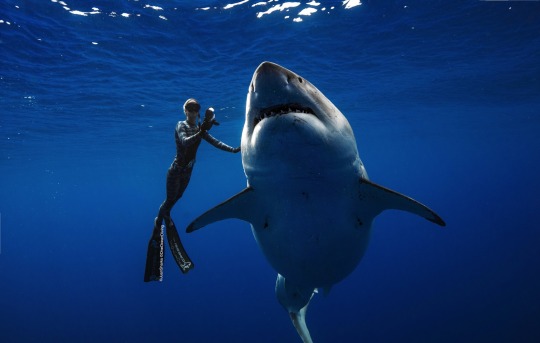
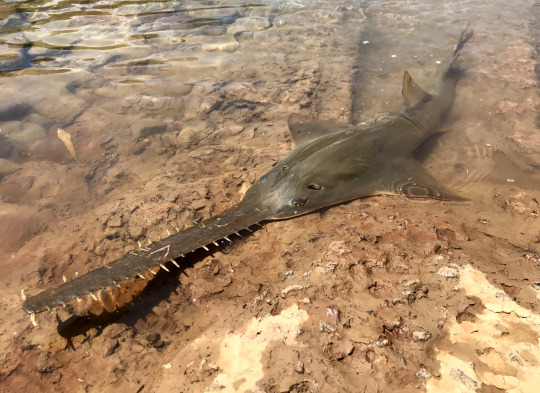
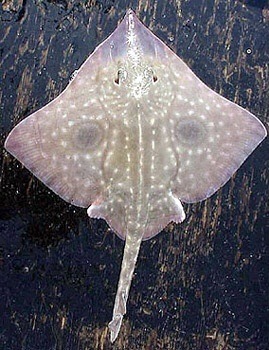

(Sources - 1, 2, 3, 4)
Chondrichthyes is a class of jawed fish, commonly called “cartilaginous fish” due to their skeletons composed mainly of cartilage, making them distinct from all other vertebrates. They are comprised of the superorders Selachimorpha (“Sharks”), Batoidea (“Rays”), and Holocephalimorpha (“Chimaeras”).
Chondrichthyans breath through gills but lack opercula (gill coverings) and swim bladders. They have paired fins, paired nares (nostrils), and placoid (tooth-shaped) scales (except for electric rays, which have loose, soft skin). These placoid scales, also called dermal denticles, provide protection and streamlining, giving the animal’s skin a sandpaper-y feel. All chondrichthyans breathe through five to seven pairs of gills, depending on the species. As a general rule, pelagic species usually must keep swimming to keep oxygenated water moving through their gills, while demersal species can actively pump water in through their spiracles (a small hole or slit behind each eye) and out through their gills. Most larger, pelagic species no longer have spiracles. Chondrichthyans have many sensory organs to perceive the world around them. Their nostrils are attached to powerful olfactory organs. Around their face are a network of electroreceptors called Ampullae of Lorenzini, which allow them to sense electrical fields. Their lateral line has modified epithelial cells which sense motion, vibration, and pressure in the water around them. However, their sound-detecting apparatus has limited range and is typically more powerful at lower frequencies. Some species have electricity-producing organs which can be used for defense and predation. Chondrichthyans have a diverse array of shapes and sizes, ranging from the 10 cm (3.9 in) long, electric Finless Sleeper Ray (Temera hardwickii) to the over 10 m (33 ft) long Whale Shark (Rhincodon typus). All species are carnivores: some predatory, some ambush-hunters, and some filter-feeders. At least one species is omnivorous. Chondrichthyans have internal fertilization and most species give live birth, while some lay eggs. There is no parental care after birth, though some chondrichthyans do guard their eggs.
Chondrichthyans are considered to have evolved from Acanthodians, which appear from the Early Silurian. The first sharks began to evolve in the Devonian Period, though, while often claimed to be relatively unchanged, modern forms did not start appearing until the Early Jurassic.
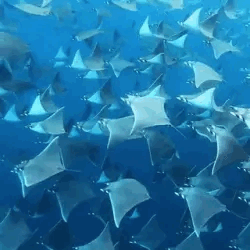
Propaganda under the cut:
Mentioned briefly above, the Bonnethead Shark (Sphyrna tiburo), a small species of hammerhead, is the only shark known to be omnivorous. While it feeds on crustaceans, molluscs, and small fish, it also ingests large amounts of seagrass, which has been found to make up around 62% of gut content mass.
Also mentioned briefly above, Electric Rays (order Torpediniformes) are known for being capable of producing an electric discharge, ranging from 8 to 220 volts, depending on species, used to stun prey and for defense.
There are over 500 different species of sharks, and only a dozen could be considered dangerous to humans. That being said, of those 12, most do not seem to like the taste of human flesh, and bites are usually accidental or exploratory.
Many pelagic chondrichthyans occasionally breach, leaping out of the water. This can be done for hunting purposes, as a mating ritual, to shake off parasites, or even just for fun!
Today, all species of Sawfish (family Pristidae) are critically endangered. However, they were relatively common in the Cretaceous, where they were likely a common food source for Spinosaurus.
(Confusingly, Sawfish are a type of ray while Sawsharks (order Pristiophoriformes) are a type of shark. Sawsharks live in the deep sea and are rarely seen, while sawfish live in coastal and brackish waters.)
Kitefin Sharks (family Dalatiidae) have bioluminescent organs which glow blue in the dark
Chimaeras have a strange pair of teeth in their lower jaw which look like rodent incisors, giving them the common names “ratfish” or “rabbitfish.”
Great White Sharks (Carcharodon carcharias) are regularly hunted by orcas, and when one is confronted by an orca it will generally flee and not return to that area for up to a year.
Manta Rays (genus Mobula) are incredibly smart. They were the first “fish” in the world to pass the “mirror test” (ie show self-awareness by recognizing themselves in a mirror rather than seeing the reflected image as another manta ray). They also have highly-developed long-term memory, form friendships, and play with each other by blowing bubbles and breaching out of the water.
243 notes
·
View notes
Text
"Keep your eyes peeled"
Ok! *Peels my cornea off like a layer of an onion* :)
34 notes
·
View notes
Note
Hello there 👋
@islamgazaaccount3
Islam, a physical therapist, 27-year-old, is living in Gaza without any form of shelter or safety for himself and his family of 6 including his 85 years old grandfather who lost a hand from a prior Israeli bombing, and is barely able to perform everyday tasks due to a lack of clean water to wash his hand with. Their home was demolished by a bombing from the Israeli occupation. While shelter is crucial, they also urgently need food and water. All of their necessities were taken away.

Islam's blog has been restricted for the third time. He tried sharing a donation link, but with limited followers, it wasn't reaching enough people. Thankfully, he created a GoFundMe account, making it easier for those who want to help, but he is still extremely low on funds.
Please consider sharing Islam's story and donating to his GoFundMe. Even a small contribution can make a big difference in their time of need. 🙏❤️
you can find Islam's story here 👉 https://gofund.me/08ed0b8c
This fundraiser has been verified by @90-ghost @northgazaupdates2 @riding-with-the-wild-hunt @mushroomjar
https://gofund.me/08ed0b8c
8 notes
·
View notes